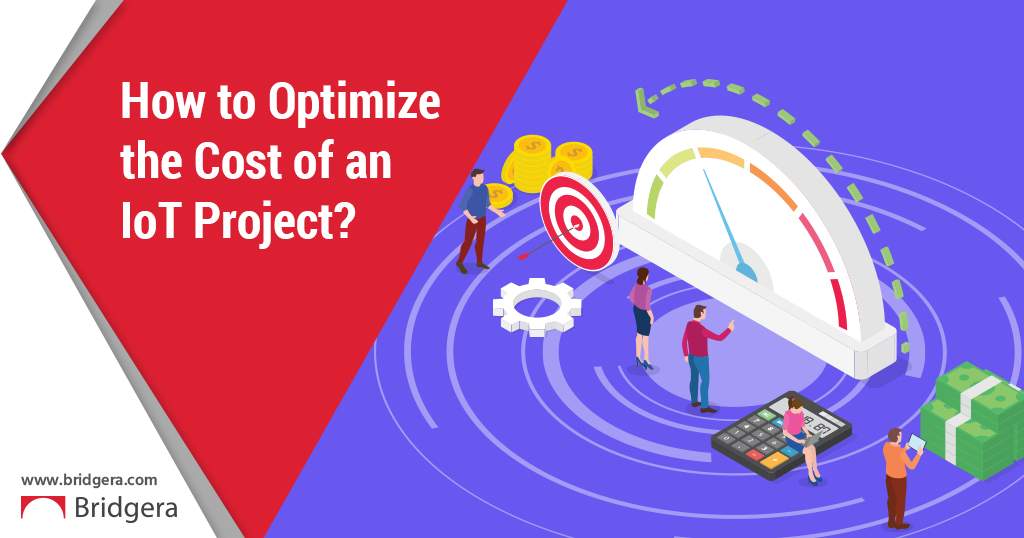
How To Optimize The LoT Project Cost

Project Cost-Enterprise IoT implementations are complex projects. And the complexity is multi-dimensional: from nailing the value proposition and ROI to designing, building, and operating the solution. Understanding and managing the costs of IoT projects can make or break digital transformation initiatives – and the ability to play in the connected future.
All IoT solutions have three key cost elements: Hardware (thing), Software (the IoT App), and the Communication layer connecting the two. These factors come into play both in the build and operate stages of the solution life cycle.
Hardware Costs
Hardware design and development can be very expensive and time consuming. A key determinant of the hardware cost is the design and prototyping cost. This requires expensive iterations with different chip selections, circuit design, certifications, form factor and physical packaging. To avoid expensive hardware iterations, it is imperative to start with a digital device simulator like the Bridgera Digital Twin. By using such a device simulation software, you can mimic the data capture and connectivity of physical devices. You can test drive multiple options by simply changing configuration parameters. This approach virtually eliminates expensive time-consuming hardware development iterations. It also allows you to experience the end-to-end benefits and challenges of the design. Using pre-certified modules is the way to go as it can significantly reduce development costs and the risk of failure during certification testing.
Software Costs
The software required to support an IoT implementation comprises of multiple layers:
- Embedded and edge computing software (which is often considered as baked into the hardware cots)
- Middleware server-side software (run time environment, typically in the cloud providing fault tolerance and data security)
- The application software required to ingest, process, store, integrate and analyze device data (the application enablement platform or AEP)
Software costs can be significantly high if you attempt to build an IoT application from scratch. Instead, use an approach of configuring and customizing an IoT Platform to drastically reduce the development cost along with time to market for an IoT solution. An AEP like Bridgera Monitoring provides a single end-to-end IoT integration platform that consolidates the software elements that can contribute to runaway costs. Bridgera Monitoring offers everything that organizations ultimately hope to gain from an IoT solution, including an IoT cloud platform, an intuitive dashboard, custom apps and analytics.
Communication Costs
The nature of the IoT solution will determine the data payload, communication protocol and frequency, connectivity and edge processing considerations and physical environment constraints based on hardware device locations. All these factors have a direct bearing on Communication costs. Fortunately, there are an increasing number of IoT centric communication options that are now becoming available that can help cut down these costs. These range from emerging low cost no-recurring fee cellular IoT options that can cover your device data needs for multiple years or narrow band/LTE Cat-M1 options, to lightweight communication protocols like MQTT and CoAP to devices with edge computing capability to reduce the data transmission traffic. The key is to focus on essential data transfer with minimal monthly recurring carrier fees.
Optimizing Operations Costs
As we can see, an IoT solution combines multiple technologies and it is critical to monitor its performance diligently in order to contain costs through various optimization techniques. Hardware, software and communication technologies work in tandem to deliver the IoT system outcome, so it may not be feasible to support a hardware upgrade that offers cost savings unless the application and communication software impacts are taken into account. Optimization options related to operating costs of an IoT solution, include but are not limited to:
- Upgrading software in device, communication and application layers as well as cloud/infrastructure software services to support high availability and security
- Query Optimization at database level
- Device Payload optimization to minimize communication costs and errors
- Real time and predictive analytics to provide timely business insights
- Tuning alerts and alarms generated by the IoT system to drive business value and customer experience
- Optimizing API services to speed up integration with new/changing enterprise systems
Conclusion
In the real world, there are several unpredictable factors that make it challenging to accurately budget for your IoT implementation. As your IoT solutions provider, Bridgera’s value proposition lies in being able to protect your strategic IoT investment by helping you build and manage all aspects of your IoT solution.
Our cross-industry expertise can identify and implement necessary adjustments to optimize your IoT solution. We focus on minimizing data transmission and IoT device power consumption, optimizing cloud infrastructure service usage and delivering actionable insights. As a result, our clients enjoy the freedom of upgrading hardware while we contain the downstream software cost impact. Streamlining every aspect is second nature to us, and that enables our customers to reap the benefits of IoT while containing costs.